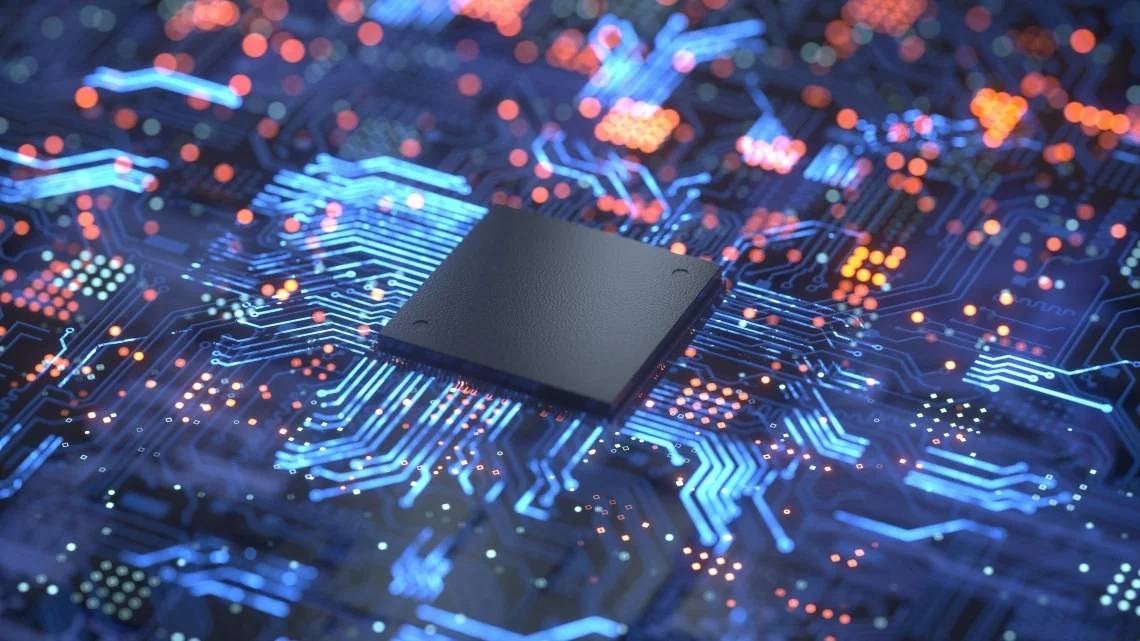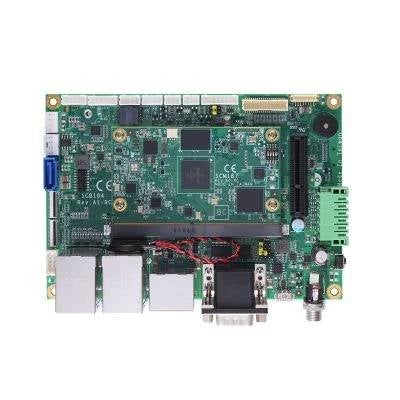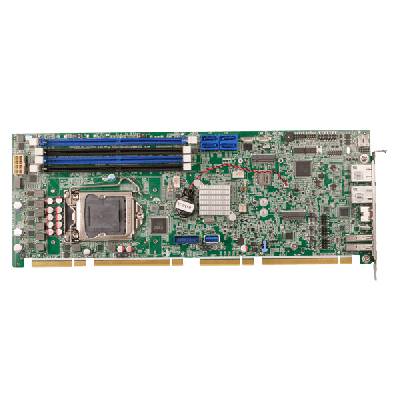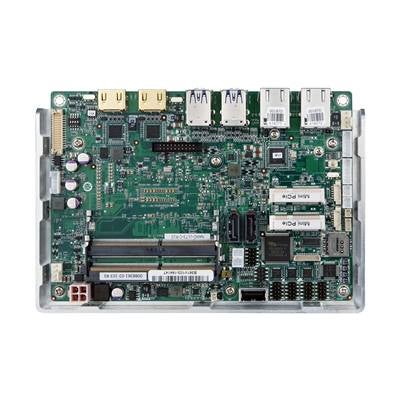Blogs & Articles
Single Board Computers: Explained

A single board computer (or SBC for short) is a compact computing device that contains all its essential components — including CPU, RAM, and I/O interfaces — on a single circuit board. Owing to their compact nature, cost effectiveness, and their overall versatility, Single Board Computers have become widely embraced by many different sectors, for both small scale and large scale businesses. As Single Board Computers offer adaptability, real time processing, and remote monitoring, you will now find that they have been enthusiastically implemented across various sectors including manufacturing, automation, transportation, education, healthcare, energy, and various sectors of programming, prototyping, coding, and development, including the Internet of Things (IoT).
Single Board Computers provide a convenient platform for rapid development, and offer advanced computational capability without the complexity of traditional PCs, which has made them indispensable for any tech enthusiast in need of compact computing solutions. They come in various form factors, with the half-size and full-size boards adhering to the PC/104 standard, and they also have the capacity to be stacked together, which may allows for the creation of multi-board systems (though this functionality is entirely optional, like so many other features of a Single Board Computer). Many SBCs do not have traditional expansion slots for connecting peripheral devices like graphics cards or additional RAM. Instead, they typically offer a variety of I/O interfaces, including USB ports, HDMI or display ports, GPIO (General Purpose Input/Output) pins, and sometimes specialised connectors for specific purposes. These interfaces are used to connect peripherals and expand the capabilities of the SBC.
SBCs present a cost-effective and space-efficient solution, suitable for tasks like data collection, machine learning, and various control systems. Their versatility and durability have made Single Board Computers an ideal choice for any challenging workplace environment that relies on a strong and dependable computer system.
What is a Single Board Computer?
A Single Board Computer is a self-contained computer system where the microprocessor, input/output capabilities, memory, and other functions are integrated onto a single circuit board. An SBC is an ideal choice if you’re looking for something that can serve as an embedded computer controller in the operation of intricate devices; from phones and gaming consoles, to POS terminals and smart homes. SBCs are also used as educational tools for teaching electronics and programming concepts, and are often employed in remote monitoring systems for data collection and analysis. They are used in educational settings to teach programming, electronics, and computer science, and they are used in embedded systems for various applications, including robotics and home automation. SBCs also offer a platform for fast prototyping and development of electronic projects, and they are suitable for edge computing, enabling data processing at or near the data source.
So what makes the humble SBC so universally valuable across so many industries? The answer is as simple as the SBC’s streamlined design. In fact, the answer is the SBC’s streamlined design. While an SBC’s streamlined infrastructure may seem counterintuitive to an advanced computing system that would traditionally require a very complicated configuration, there is actually a potent elegance to a Single Board Computer’s simplicity, and it is that very streamlined elegance that gives it such versatility across so many industries. Furthermore, while conventional desktop computers and traditional corporate networks are typically tailored to the specific needs of the user, an industrial SBCs is a bit more straightforward, which drastically reduces how often it will cause bugs in your system. In fact, Single Board Computers are so versatile and reliable, that they can be trusted in far vital services, such as traffic light controls and medical imaging systems, automotive anti-lock braking and stability control systems, and even missile guidance systems.
Features of Single Board Computers
Single Board Computers offer a wide array of advantages, making them suitable for diverse applications, from web design to rapid prototyping. Here are just some of the features that have made the humble SBC so ubiquitously embraced by both home offices and international enterprises alike:
- Compact Design
- Low Power Consumption
- Cost-Effectiveness
- Reliability
- Sturdiness
- Connectivity
- Open Source
- Scalability
- Versatility
Compact Design: Though Single Board Computers are dense, they nonetheless pack all of a computer’s most essential component onto a single circuit board. The compact size of its single-board design makes the SBC space-efficient for even the tightest of installations.
Low Power Consumption: Single Board Computers are by design, highly energy-efficient, which typically makes them suitable for embedded or battery-powered systems.
Cost-Effectiveness: As Single Board Computers require far fewer working components than a standard PC, it means they are comparatively far more cost-effective.
Reliability: A Single Board Computer is not just reliable, but it is also reliable for much longer than a standard PC set-ups. This is because an SBC requires fewer moving parts, so it drastically minimises the number of parts that will eventually break down (such as a PC’s fan), thus expanding its operation lifespan.
Sturdiness: Many SBCs are designed to withstand challenging environmental conditions, making them ideal for industrial use.
Connectivity: SBCs provide a wide range of I/O interfaces for connecting to sensors, displays, and peripherals.
Open Source: Many SBCs are based on open-source hardware and software, fostering a community of developers.
Scalability: SBCs are very much like the Lego of the computing world; a standard unit offers a very simple and streamlined design, but if you wish to expand upon it, you can do so easily, as most SBCs will support stacking or clustering to scale up you computing power when needed.
Versatility: Single Board Computers are notably versatile, serving a wide range of applications across industries including industrial automation, telecommunications, edge computing, remote monitoring, education, and medical devices, and more. SBCs can also be customised and expanded with additional components as needed for specific applications, in order to provide greater connectivity and processing power. They are capable of serving as a versatile computing platform for a multitude of tasks. SBCs are even currently playing a crucial role in the development of various applications within IoT (Internet of Things).
What’s the Difference between an SBC and an MCU?
An MCU (as in Microcontroller Unit not the Marvel Cinematic Universe), is an embedded system that condenses an entire computer onto a single microchip. Within this compact package, you will find memory, storage, processor, and configurable input and output pins. While microcontrollers generally lack significant computing power and flexibility in reprogramming, these limitations are intentional. An MCU’s design allows for cost-effective mass production and enables them to excel in performing a variety of tasks that would be unsuitable for a full-fledged computer. Conversely, an SBC is designed for multitasking, running full operating systems, and handling complex applications, making them suitable for tasks that require the capabilities of a traditional computer.
So in a nutshell, a Single Board Computer (SBC) is designed to be more powerful and versatile than an MCU (Microcontroller Unit).
What’s the Best Single Board Computer?
Regrettably there is no universal answer to this, as the best SBC for one person’s criteria is inevitably going to differ somewhat from your own. That said, while such an answer to such a question is ultimately going to be as subjective as it is divisive, here are some of the Single Board Computer types that we know to be both high quality and high selling.

The SCM187-4R8EI-184EVK SMARC v2.1 Mini Quad v2.1 (from Axiomtek) is a Mini Quad 1.6 GHz SoC. It offers 4GB LPDDR4 system memory and 8GB eMMC storage, and it’s ideal for heavy duty tasks such as industrial automation.

The PCIE-Q470 Full-size PICMG 1.3 (from IEI Integration Corp) is a full-size PICMG 1.3 CPU card that supports LGA1200 Intel 10th/11th Gen. It’s ideal for a wide range of sectors, including industrial automation, medical, transport, and more.

The NANO-ULT3 EPIC SBC (also made by the IEI Integration Corp) is a 6th Gen Mobile Core i7/i5/i3 and Celeron on-board Processor (ULT). It is perfect for gaming, minding, medical, and more.
But if you want to find out what the best Single Board Computer for your specific needs are, get in touch with us via the Tekdis Contact Us page, tell us your requirements, and one of our trusty staff members will be able to tell which SBC is best for your express requirements. Easy!
Why Choose Tekdis?
Besides our wide range of single board computers, Tekdis stocks an extensive selection of high quality computing products, designed for everything from digital signage to medical solutions. To browse our full range, head over to the Tekdis website, or if you already know what you’re after, drop us a line.
